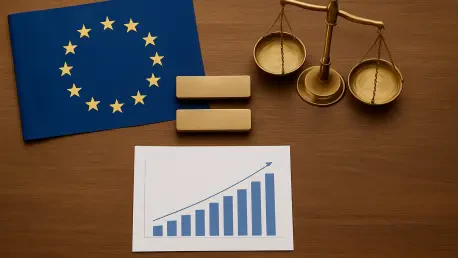In a groundbreaking move toward workplace equity, the European Union has introduced the EU Pay Transparency Directive 2023/970, a regulation poised to fundamentally alter how companies manage and disclose compensation across the continent. This legislation breathes life into the principle of equal pay for equal work—a cornerstone of EU values dating back decades—by demanding concrete action over mere promises. With an implementation deadline looming on June 7, 2026, businesses face mounting pressure to shift pay discussions from secretive backrooms to transparent, accountable frameworks. Far from a simple policy update, this directive challenges organizations to rethink their entire approach to compensation, impacting not just rank-and-file employees but also executives and boardrooms. The stakes couldn’t be higher: while transparency offers a path to trust and fairness, it also presents significant operational hurdles for firms unaccustomed to such openness. This article delves into the core components of this transformative regulation, exploring its mandates, challenges, and broader implications for European workplaces.
Unpacking the Core Mandates of the Directive
The EU Pay Transparency Directive lays out a robust set of requirements aimed at enforcing equal pay across diverse industries and sectors. At its heart, the regulation compels employers to disclose pay ranges to job candidates before hiring, ensuring that expectations are clear from the outset. Employees also gain the right to access detailed compensation data, segmented by gender, empowering them to identify and challenge potential disparities. For companies with more than 100 employees, mandatory reporting on gender pay gaps becomes a critical obligation, casting a spotlight on inequalities that may have previously gone unaddressed. These measures are designed to create a culture of accountability, where pay decisions must be defensible with objective data rather than subjective reasoning. The directive’s emphasis on transparency before and during employment marks a significant departure from traditional practices, pushing firms to align their policies with principles of fairness.
Beyond disclosure, the directive strikes at longstanding barriers by banning pay secrecy clauses that have historically silenced workers from discussing their earnings. It also strengthens enforcement mechanisms, notably by reversing the burden of proof in discrimination cases—employers must now demonstrate that pay differences are not discriminatory when challenged. This shift places additional responsibility on businesses to maintain meticulous records and justify compensation structures with clear, unbiased criteria. The implications are profound, as companies must not only comply with legal standards but also prepare for potential scrutiny from employees and regulators alike. As the deadline for implementation approaches, the urgency to adapt systems and processes grows, with reporting requirements kicking in as early as January 2026. This regulatory framework isn’t just about compliance; it’s about reshaping the very foundation of how pay equity is perceived and achieved in European workplaces.
Navigating the Practical Hurdles of Implementation
Implementing the EU Pay Transparency Directive presents a complex set of challenges for companies, particularly in crafting transparent salary grids that withstand scrutiny. This process involves benchmarking compensation against market standards and establishing objective criteria for any pay discrepancies, a task that goes beyond mere numbers to probe deeper questions of value and fairness within an organization. Many firms lack the infrastructure or cultural readiness for such openness, often relying on outdated systems that prioritize confidentiality over clarity. The transition to structured, data-driven pay models requires a complete overhaul of HR practices, from how salaries are determined to how they are communicated internally. As the early 2026 reporting deadline nears, businesses must act swiftly to align their operations with these new expectations, a process that could reveal uncomfortable truths about existing inequities.
The operational burden of compliance extends to data collection and reporting, areas where many companies may find themselves unprepared. Building systems to track and analyze gender-based pay data demands significant investment in technology and training, especially for larger organizations with complex workforce structures. Resistance from employees and executives accustomed to privacy around compensation adds another layer of difficulty, as cultural pushback could slow the adoption of transparent practices. Balancing the need to remain competitive in the market while ensuring internal equity poses a delicate challenge, as firms must justify pay differences without alienating talent. The directive’s push for transparency is not a quick fix but a long-term commitment to redefining compensation strategies. Companies that fail to adapt risk not only legal repercussions but also damage to their reputation as equitable employers in an increasingly scrutinizing landscape.
Clarifying the Scope and Addressing Ambiguities
A critical aspect of the EU Pay Transparency Directive lies in defining who exactly falls under its purview, as its primary focus targets employees under standard labor contracts in both public and private sectors. This clear delineation ensures that the bulk of the workforce benefits from enhanced transparency and protections against pay discrimination. However, the regulation’s applicability to non-traditional roles, such as executives operating under management agreements, remains a gray area that has sparked considerable debate. While legally these positions may be excluded from the directive’s scope, the rising cultural demand for openness in all levels of compensation could influence future interpretations or voluntary adoption by companies. This uncertainty creates a planning dilemma for organizations, as they must anticipate whether broader transparency expectations will eventually encompass all forms of employment arrangements.
The ambiguity surrounding the directive’s scope also raises questions about how Member States might adapt the regulation to their unique labor landscapes. Differing national interpretations could lead to inconsistencies in application, with some countries potentially expanding the rules to include executives or other categories of workers not explicitly covered. For businesses operating across multiple EU nations, this patchwork of approaches complicates compliance efforts, requiring tailored strategies to meet varying legal standards. The evolving nature of workplace transparency suggests that even if certain roles are currently exempt, societal and regulatory pressures may shift the boundaries over time. Companies must stay vigilant, monitoring both legal developments and cultural trends to ensure they are not caught off guard by expanding expectations. This dynamic aspect of the directive underscores the need for flexible, forward-thinking policies that can adapt to an ever-changing regulatory environment.
Driving a Cultural Shift Toward Accountability
The EU Pay Transparency Directive signals a broader movement across Europe toward heightened accountability in compensation practices, reflecting a societal push to eliminate systemic gender pay gaps. This trend prioritizes data-driven decision-making over subjective biases, aiming to create workplaces where fairness is not just an ideal but a measurable reality. Some Member States, such as Belgium and Sweden, have already taken proactive steps to align with the directive, demonstrating a commitment to swift implementation. In contrast, others like Romania have yet to propose draft legislation, highlighting the uneven pace of adoption across the region. This disparity suggests that while the directive’s goals are uniform, the journey to achieving them will vary, potentially creating competitive imbalances among businesses operating in different countries. The challenge lies in harmonizing these efforts to ensure a level playing field.
More than a legal mandate, the directive serves as a catalyst for transforming how compensation is perceived and discussed within organizations. Successful implementation could redefine workplace culture by fostering trust and reinforcing the value of equity at every level. However, this transformation hinges on companies’ ability to address operational complexities and overcome cultural resistance to openness. The push for transparency extends beyond mere compliance, encouraging firms to view pay as a cornerstone of organizational integrity rather than a guarded secret. As businesses grapple with these changes, the directive’s impact will likely ripple through hiring practices, employee retention, and overall morale. The coming years will test the resilience of European companies, as their response to this regulation will shape not only their internal dynamics but also their standing in a global market increasingly focused on ethical practices.
Envisioning the Future of Workplace Equity
Looking back, the rollout of the EU Pay Transparency Directive marked a pivotal moment in the journey toward workplace fairness, as it compelled companies to confront long-ignored disparities with actionable measures. The mandates for pre-employment pay disclosure, gender-based data reporting, and the elimination of secrecy clauses tackled systemic issues head-on, setting a new standard for accountability. Despite the operational and cultural challenges, many businesses began to adapt, recognizing that transparency was not just a regulatory burden but a chance to build stronger, more trusting relationships with their workforce. The uneven progress among Member States underscored the complexity of achieving uniform change, yet it also highlighted the shared commitment to equity as a guiding principle.
Reflecting on this transformative period, the path forward involves continuous adaptation and vigilance for companies navigating the evolving landscape of pay transparency. Staying ahead requires investing in robust systems to track and report compensation data, ensuring compliance with both current rules and potential future expansions of scope. Engaging employees in open dialogue about pay practices can also mitigate resistance, turning a mandated shift into a collaborative effort. For policymakers, harmonizing implementation across the EU remains a critical next step to prevent disparities from undermining the directive’s intent. As transparency becomes embedded in workplace norms, the focus should shift to measuring long-term outcomes—gauging whether these changes truly close gender pay gaps and enhance organizational trust. This ongoing commitment to fairness will define the legacy of the directive in shaping equitable workplaces for generations to come.









